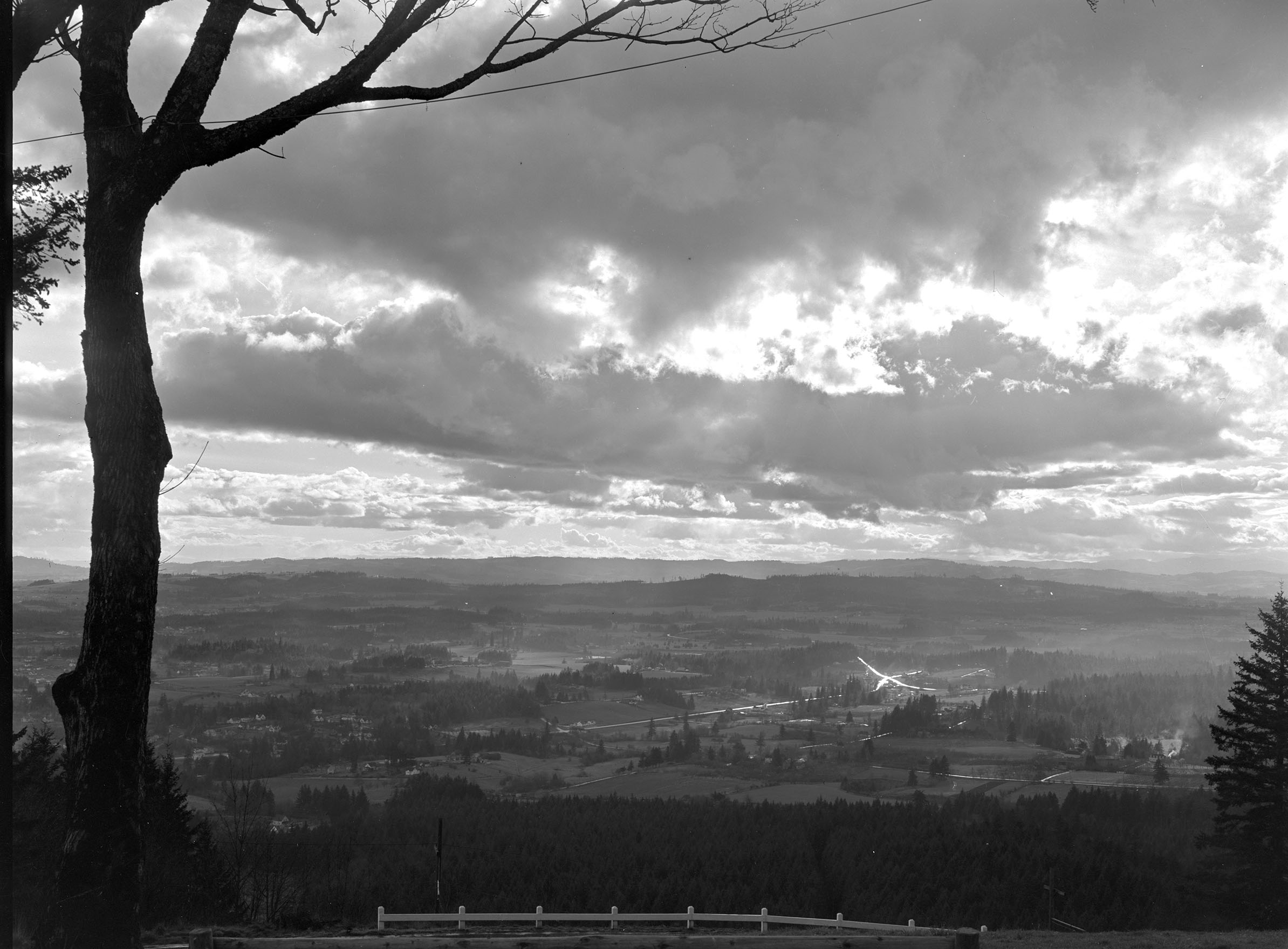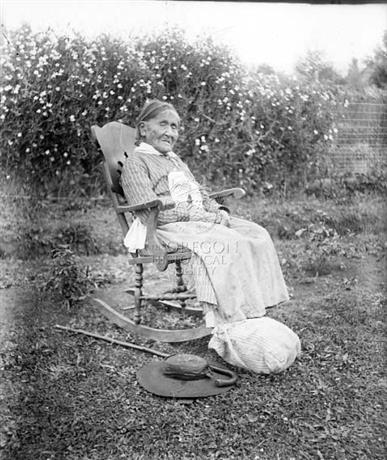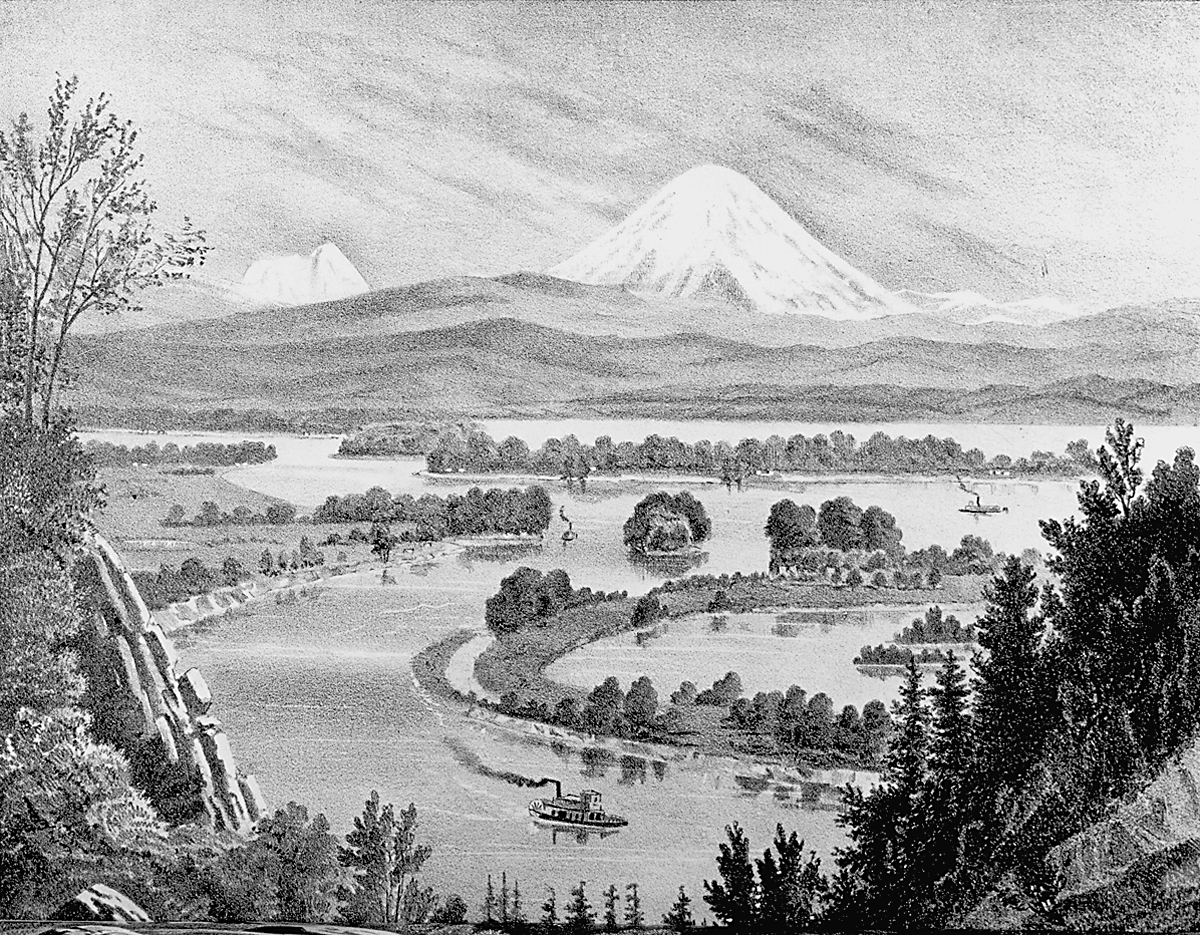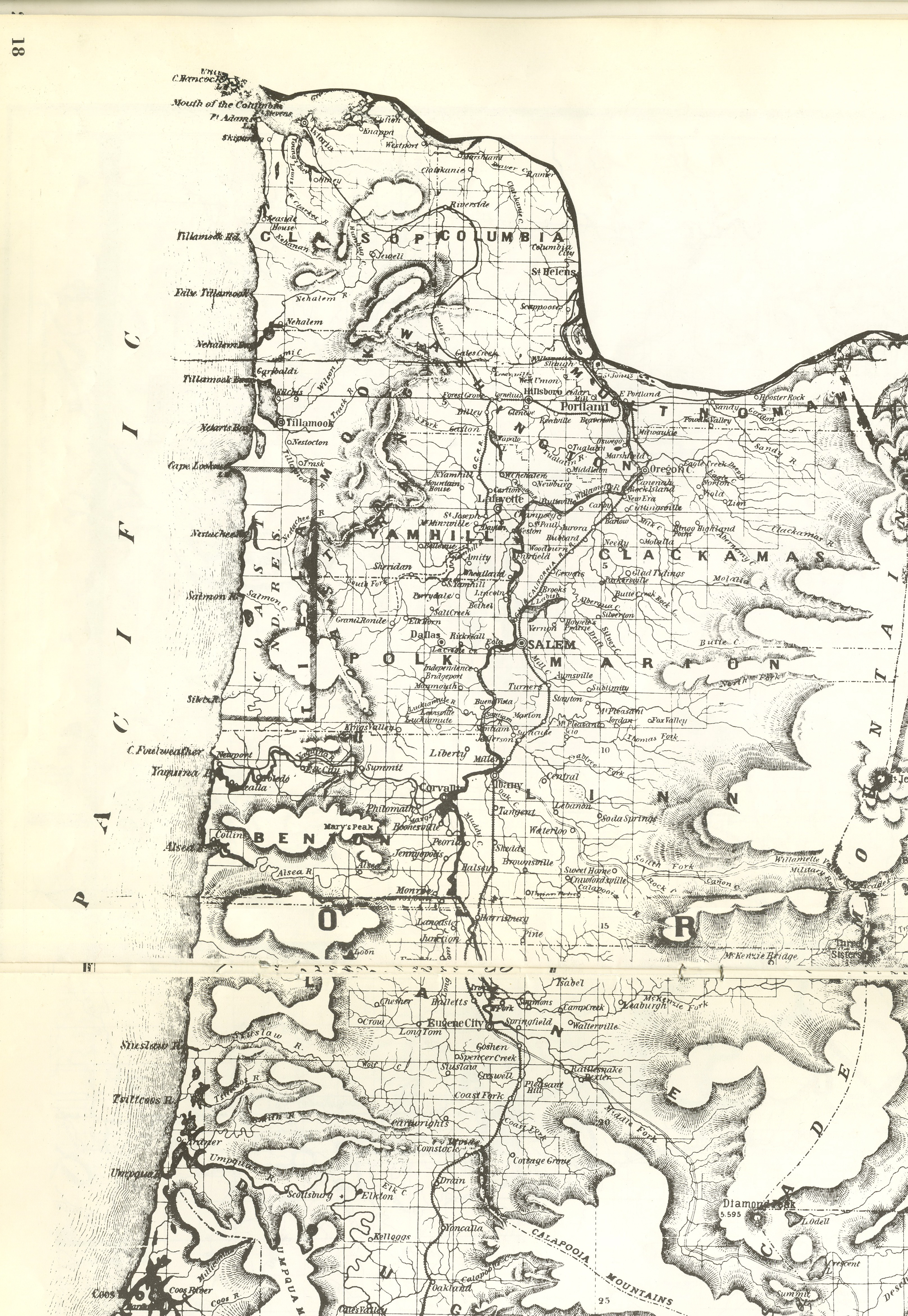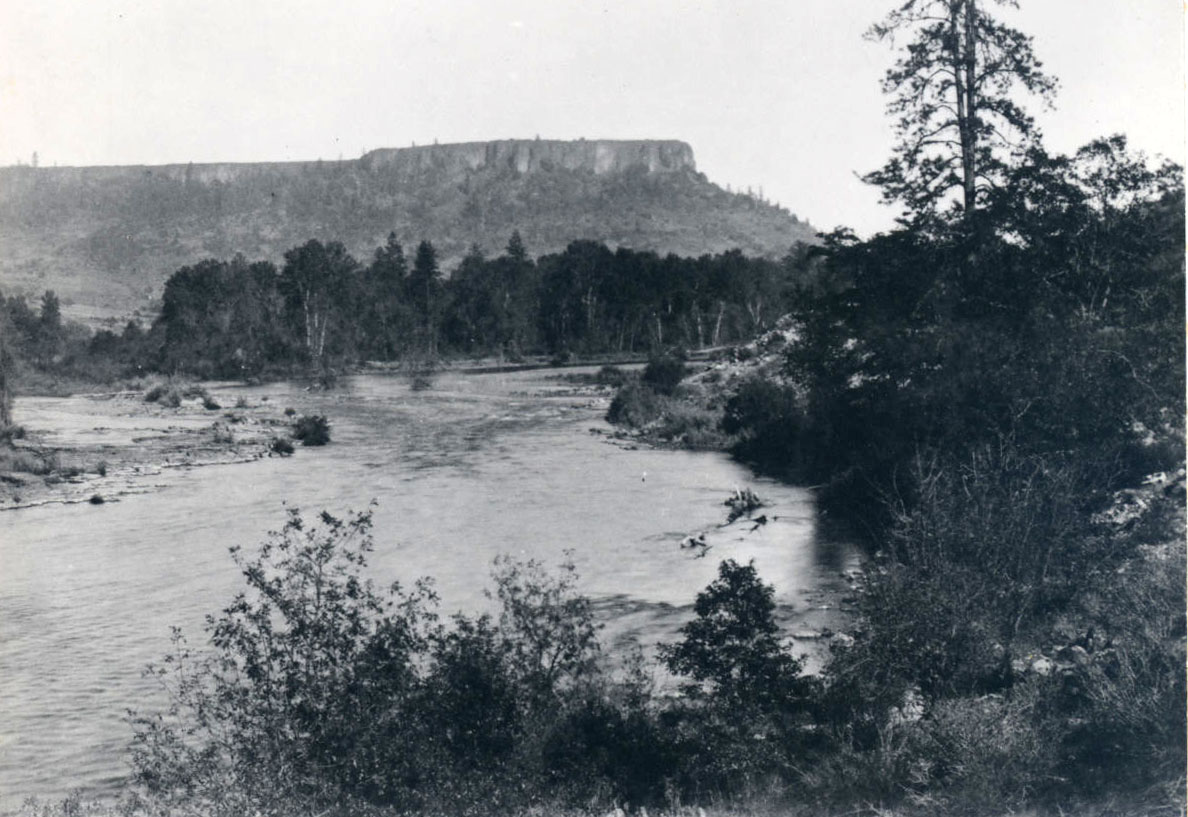Tualatin (properly pronounced 'twälə.tun in English) was the name of a collection of related but independent villages whose members spoke a dialect of Northern Kalapuya, the northernmost of three languages composing the Kalapuyan language-family. Synonyms include Atfalati, Tfalati, and Twalati (variously spelled).
Sixteen Tualatin villages are known by name: these stretched through Tualatin Plains (modern-day Beaverton, Hillsboro, Mountaindale, Forest Grove), the Wapato Valley (Gaston), and the Chehalem and North Yamhill Valleys (Newberg, Carlton, Yamhill). Eight of these villages were clustered around Wapato Lake, a former marshy lake at Gaston noted for its abundance of wapato (Sagittaria latifolia), the tubers of which were an important Native staple food.
Tualatins lived about half the year in dirt-banked, semi-excavated winter houses built of cedar-bark slabs or cedar planks lashed to a rectangular framework. They spent the drier part of the year camped across their tribal territory in pursuit of game, fish, and a variety of roots, seeds, and berries. By carefully preserving and storing these provisions, Tualatins had time during the winter months for storytelling, religious ceremonialism, as well as household tasks such as tool making and basket weaving.
The basic unit of Tualatin society was the autonomous winter village, consisting of one to several extended families each tracing kinship through the male line. Women usually married into this group from outside. Larger villages had one or more chiefs, who with their immediate families were distinguished by the quality of their apparel and the value of their property. Property included slaves who lived in the household with their masters. Slave status was hereditary, and slaves were not permitted to subject their infants' heads to frontal-occipital flattening, the mark of free birth among lower Columbia Native people.
Tualatin religion revolved around the individual's relationship with one or more helpful spirits, first sought on pre-adolescent quests and expressed in later life through songs performed at winter spirit-dances. Individuals having relationships with particularly strong spirits might become shamans, called on to treat more serious illnesses.
Tualatins suffered greatly from introduced diseases. Only about sixty-five still survived in 1855, when the U.S. government concluded a treaty with all of the Willamette Valley tribes. In 1856, the tribe was removed to Grand Ronde Reservation, some sixty miles southwest of their original homeland. Descendants of the Grand Ronde Tualatins continue to live in the Grand Ronde area and in other Native communities of the Pacific Northwest.
-
![]()
Wapato Lake and the town of Gaston.
Courtesy Oregon Hist. Soc. Research Lib., 44672
-
![]()
Related Entries
-
![Confederated Tribes of Grand Ronde]()
Confederated Tribes of Grand Ronde
The Confederated Tribes of Grand Ronde Community of Oregon is a confede…
-
![Kalapuyan peoples]()
Kalapuyan peoples
The name Kalapuya (kǎlə poo´ yu), also appearing in the modern geograph…
-
![Kalapuya Treaty of 1855]()
Kalapuya Treaty of 1855
The treaty with the Confederated Bands of Kalapuya (1855) is the only r…
-
![Tualatin, City of]()
Tualatin, City of
The City of Tualatin is twelve miles south of Portland, on the southeas…
-
![Wapato Lake National Refuge]()
Wapato Lake National Refuge
The Wapato Lake National Wildlife Refuge, approved in 2007, is a noncon…
-
Willamette River
The Willamette River and its extensive drainage basin lie in the greate…
-
![Willamette Valley]()
Willamette Valley
The Willamette Valley, bounded on the west by the Coast Range and on th…
-
![Willamette Valley Treaties]()
Willamette Valley Treaties
From 1848 to 1855, the United States made several treaties with the tri…
Related Historical Records
Map This on the Oregon History WayFinder
The Oregon History Wayfinder is an interactive map that identifies significant places, people, and events in Oregon history.
Further Reading
Jacobs, Melville, ed. “Tualatin Texts.” In Kalapuya Texts, edited by Jacobs, 155-98. Publications in Anthropology. Vol. 11. Seattle: University of Washington, 1945.
Zenk, Henry. “Kalapuyans.” In Northwest Coast, edited by Wayne Suttles, 547-53. Handbook of North American Indians, Vol 7. Washington, D.C.: Smithsonian Institution, 1990.


